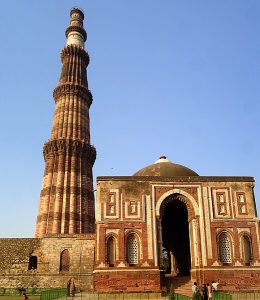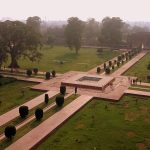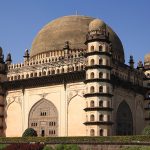Slave Dynasty (1206 to 1290 CE)
- The style of architecture that came during this period is known as the Mamluk style of architecture.
- Most of the constructions were remodeling of the existing Hindu structures.
- For Example – the Quwwat-ul-Islam mosque in the Qutub Minar premises which was converted from a Jain temple.
Qutub Minar
Pic Credit – Wikimedia Commons |
Khilji Dynasty (1290 CE to 1320 CE)
- Established the Seljuk style of architecture.
- Material Used – Red sandstone
- The prominence of Arcuate style began during this period.
- Mortar began to be used prominently in all the constructions as a cementing agent.
- For Example – Alai Darwaza by Ala-ud-din Khilji.
Alai Darwaza
|
Tughlaq Dynasty
- Material Used – grey sandstone.
- The focus was more on the strength of the building and so there was less emphasis on decoration.
- The constructions combined both arch and lintel methods of entrance design.
- They also introduced a style of construction known as “batter” which was characterised by sloping walls to give more strength to the buildings.
- For Example – The cities of Tughlaqabaad, Jahanpanah, and Ferozabad.
Lodi Dynasty
- Only tombs were commissioned during this period.
- Introduction of double domes. Reasons for introduction
- To give strength to the structure.
- To lower the inner height of the dome.
- For Example – Lodi Gardens in the city of Agra was established by Sikandar Lodi.



